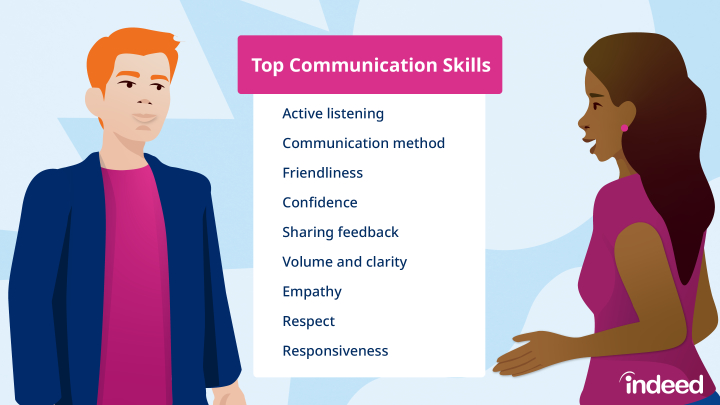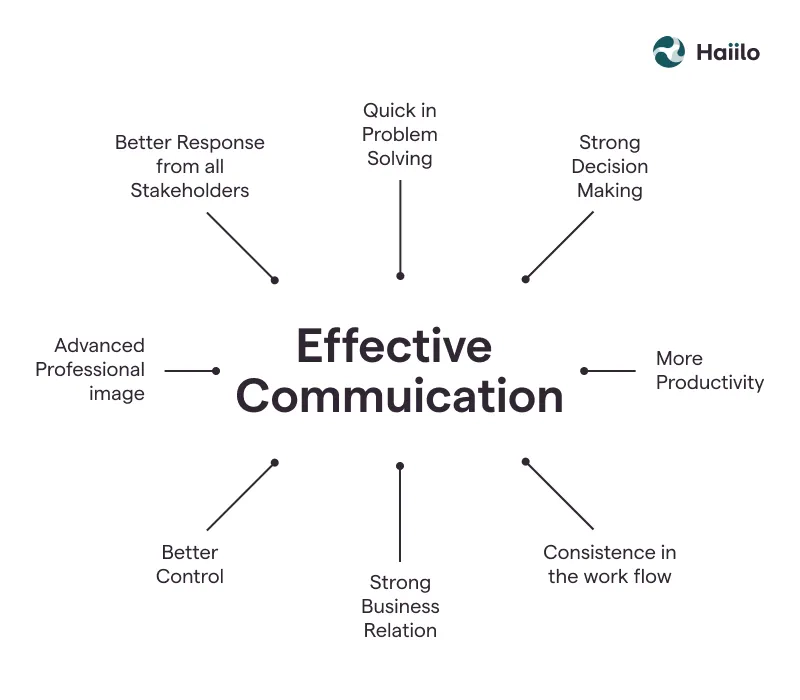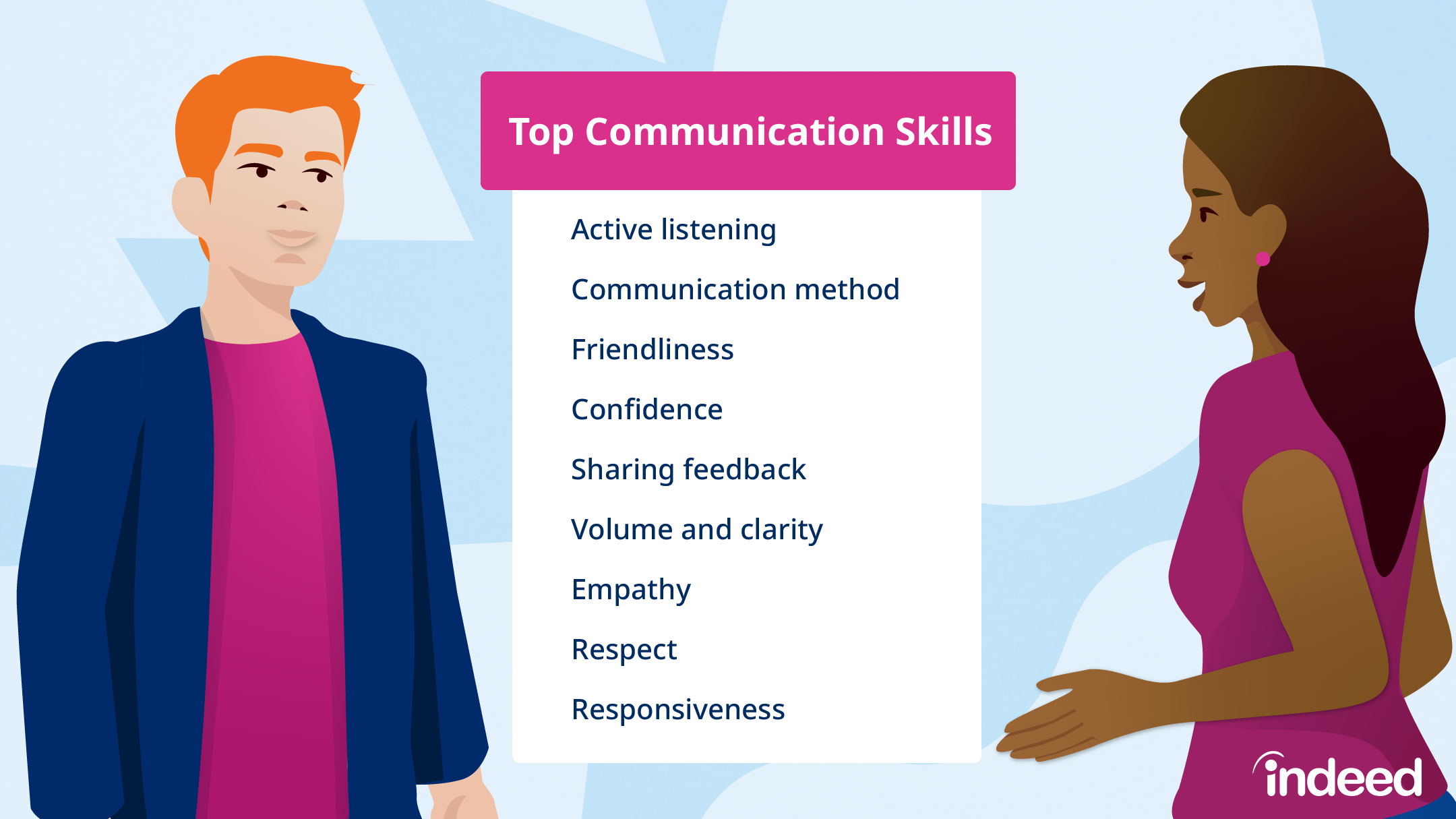Top Communication Skills
Communication skills are crucial for effective interaction, as they allow individuals to convey their ideas and thoughts clearly and efficiently. They encompass both verbal and non-verbal forms of communication, such as active listening, expressive body language, and articulate speech.
Developing strong communication skills can greatly enhance one’s personal and professional relationships, improve teamwork and collaboration, and foster effective problem-solving and decision-making. Good communication skills enable individuals to build rapport, establish trust, and convey information accurately, making them an essential attribute in various aspects of life.
In today’s fast-paced and interconnected world, the ability to communicate effectively has become increasingly important. Whether it is in the workplace, social settings, or personal relationships, being able to express oneself clearly and understand others plays a crucial role in overall success and satisfaction. This is why honing and refining communication skills should be a priority for everyone. We will delve into the top communication skills that can help individuals become more effective communicators. By adopting and practicing these skills, individuals can enhance their ability to connect with others, resolve conflicts, and convey their messages with clarity and impact. So, let’s dive in and explore the essential communication skills that can transform your interactions and bring about positive outcomes.
:max_bytes(150000):strip_icc()/communication-skills-list-2063779_FINAL1-5b60d4a9c9e77c00251d3de9.png)
Credit: www.thebalancemoney.com
Active Listening
Active listening is a crucial communication skill that involves fully engaging with others to understand their perspective and respond effectively. With its emphasis on genuine attentiveness and empathy, active listening enhances relationships and promotes effective communication.
Paraphrasing
Paraphrasing is a vital communication skill that involves restating what someone has said in your own words. By paraphrasing, you demonstrate your understanding of the speaker’s message and show that you are actively engaged in the conversation. It helps to clarify any confusion and confirms that you are listening attentively.
Nonverbal communication plays a significant role in effective listening. It includes facial expressions, gestures, posture, and eye contact. These nonverbal cues can convey a range of emotions and attitudes, helping you to better understand the speaker’s message. When you maintain eye contact and use appropriate body language, you create an environment that encourages open and honest communication.
Below is a table summarizing key nonverbal communication cues:
| Cue | Meaning |
|---|---|
| Smiling | Approachability and friendliness |
| Open posture | Receptiveness and willingness to listen |
| Nodding | Acknowledgment and agreement |
| Direct eye contact | Engagement and attentiveness |
Remember that nonverbal cues can vary across cultures, so it’s important to be mindful of cultural differences and adapt your communication accordingly.

Credit: www.indeed.com
Effective Verbal Communication
Effective verbal communication plays a crucial role in our everyday lives, as it allows us to express ourselves clearly and connect with others on a deeper level. It involves the use of spoken words, tone of voice, and body language to convey our thoughts, ideas, and emotions accurately. In this section, we will explore the key aspects of effective verbal communication, focusing on two important skills: clear and concise language and empathy and understanding.
Clear And Concise Language
Using clear and concise language is vital for effective verbal communication. It involves expressing ideas and thoughts in a straightforward manner, avoiding ambiguity and unnecessary jargon. By using simple and precise words, we make it easier for others to understand our message and minimize the chances of miscommunication.
When we communicate, we should strive to articulate our thoughts with clarity. This means avoiding long-winded explanations and sticking to the main point. Clear and concise language enables us to be direct and to the point, capturing the essence of our message without overwhelming the listener with unnecessary details or irrelevant information.
Using clear and concise language not only enhances understanding but also demonstrates respect for the listener’s time and attention. When we communicate concisely, we show that we value their understanding and are considerate of their needs. This approach paves the way for more effective and engaging conversations that leave a lasting impact.
Empathy And Understanding
Empathy and understanding are essential elements of effective verbal communication. When we possess these qualities, we are able to connect with others on a deeper level and truly comprehend their thoughts and feelings. This understanding allows us to respond in a way that is sensitive and appropriate, fostering stronger relationships and more meaningful conversations.
Empathy involves putting ourselves in someone else’s shoes, imagining what they may be experiencing and feeling. By doing so, we gain insight into their perspective and can respond with compassion and understanding. This demonstrates that we genuinely care about their thoughts and emotions, creating a space where open and honest communication is encouraged.
Understanding goes hand in hand with empathy. It requires active listening and paying attention to both verbal and non-verbal cues. By being attentive, we not only comprehend the words being spoken but also pick up on the nuances in tone, body language, and facial expressions. This allows us to understand the underlying messages and respond appropriately, enhancing the effectiveness of our communication.
Written Communication
Effective written communication is a vital skill for success in both personal and professional life. Whether it’s crafting emails, composing reports, or creating blog posts, the ability to communicate ideas clearly and concisely through the written word is crucial. In this blog post, we will focus on the subheading of ‘Written Communication’ and explore two key aspects: Structure and Organization, and Grammar and Spelling.
Structure And Organization
When it comes to written communication, having a well-structured and organized piece of content is essential. A clear structure not only enables your readers to follow your ideas effortlessly but also helps you convey your message efficiently. To ensure your content is well-structured, consider the following:
- Start with a catchy and informative heading to grab your readers’ attention.
- Divide your content into logical sections using subheadings.
- Use paragraphs to break down your ideas and make your content easy to read.
- Provide transitions between paragraphs to maintain the flow of your writing.
- Consider using bullet points or numbered lists to present information in a concise and organized manner.
Grammar And Spelling
Having proper grammar and spelling in your written communication is essential for creating a professional impression and ensuring clarity. Here are some tips to help you improve your grammar and spelling:
- Proofread your content carefully for any grammar or spelling errors.
- Use grammar-checking tools like Grammarly to catch any mistakes you may have missed.
- Brush up on your grammar rules to ensure correct sentence structure and punctuation.
- Double-check the spelling of words, particularly those that are commonly misspelled.
- Ask a colleague or friend to review your writing to catch any errors you may have overlooked.

Credit: haiilo.com
Nonverbal Communication
Nonverbal communication is an integral part of human interaction. While verbal communication involves the use of words, nonverbal communication encompasses other forms of expression such as body language and eye contact. Understanding and effectively utilizing nonverbal communication skills is crucial for building strong relationships, conveying messages accurately, and creating a positive impression. In this article, we will explore two important aspects of nonverbal communication – body language and eye contact – and how they contribute to effective communication.
Body Language
Body language plays a significant role in our daily interactions. It refers to the movements, gestures, and postures we subconsciously exhibit. Our body language can convey emotions, intentions, and attitude, sometimes even more powerfully than words. By paying attention to our own body language and being aware of others’, we can better understand their feelings and intentions.
Some important aspects of body language include:
- Posture: A good posture indicates confidence and openness, while slouching may suggest disinterest or lack of confidence.
- Gestures: Hand movements and gestures can enhance communication, but it’s important to be aware of cultural differences to avoid misinterpretations.
- Facial expressions: Our faces express a wide range of emotions. Smiling, for example, can convey friendliness, positivity, and approachability.
- Personal space: Respecting personal space and boundaries is essential for making others feel comfortable.
Eye Contact
Eye contact is another crucial element of nonverbal communication. It refers to maintaining visual contact with the person you are communicating with. Consistent eye contact shows engagement, respect, and interest in the conversation, while avoiding eye contact might convey disinterest or lack of confidence. However, it’s important to note that cultural norms surrounding eye contact may vary, and it’s essential to be aware of and respect these differences.
Positive eye contact can be established by:
- Making eye contact regularly without staring intensely or avoiding eye contact altogether.
- Blinking naturally and not excessively, which can indicate nervousness or discomfort.
- Matching the appropriate level of eye contact based on the cultural context.
By understanding and effectively utilizing nonverbal communication skills, we can enhance our ability to connect with others, build rapport, and convey our messages accurately. Whether it’s through body language or eye contact, being mindful of these nonverbal cues can significantly improve our communication skills and foster positive relationships.
Conflict Resolution
Conflict is a natural part of human interaction. And when it arises, effective conflict resolution skills are crucial to maintaining peaceful relationships and fostering a positive work environment. By mastering conflict resolution, you can navigate difficult conversations and find mutually beneficial solutions that satisfy everyone involved.
Managing Emotions
When conflicts arise, emotions tend to run high. It’s important to manage your emotions so that you can approach the situation with clarity and objectivity. Take a moment to step back and breathe deeply. Remind yourself to stay calm and focused.
Identify and acknowledge your own emotions. Recognize that intense emotions can cloud judgment and hinder effective communication. Emotionally intelligent individuals are able to regulate their emotions, preventing them from escalating and causing further conflict.
Active Listening In Difficult Situations
Active listening is a powerful tool in diffusing conflicts and resolving disputes. When engaged in a difficult conversation, it’s important to practice active listening to understand the other person’s perspective fully.
Here’s how you can practice active listening:
- Give your full attention to the speaker, maintaining eye contact and avoiding distractions.
- Listen without interrupting or formulating your response. Let the speaker finish before providing your input.
- Ask open-ended questions to clarify any points of confusion.
- Paraphrase and summarize what the speaker has said to demonstrate that you have understood their viewpoint.
By actively listening, you create an atmosphere of respect and empathy, showing the other person that their perspective is valued. This can lead to a more constructive discussion and effective resolution of the conflict.
Frequently Asked Questions Of Top Communication Skills
What Are The 5 Basic Communication Skills?
The 5 basic communication skills include listening, speaking, reading, writing, and non-verbal communication. These skills are essential for effective communication in various personal and professional situations.
What Are The 7 Effective Communication Skills?
The 7 effective communication skills include listening actively, speaking clearly, using nonverbal cues, being empathetic, showing respect, being open-minded, and giving constructive feedback. These skills enhance understanding and connection between individuals.
What Are The Top 3 Communication Skills?
The top 3 communication skills are listening, speaking, and nonverbal communication. These skills involve actively hearing and understanding others, expressing thoughts and ideas clearly, and using body language effectively to convey messages.
Conclusion
To sum up, effective communication skills play a vital role in today’s fast-paced and interconnected world. By improving your ability to listen actively, speak clearly, and express your ideas with confidence, you can enhance your personal and professional relationships. Remember, communication goes beyond words; body language, non-verbal cues, and empathy are equally important.
So, invest time and effort in honing your communication skills to succeed in both your personal and professional endeavors.


